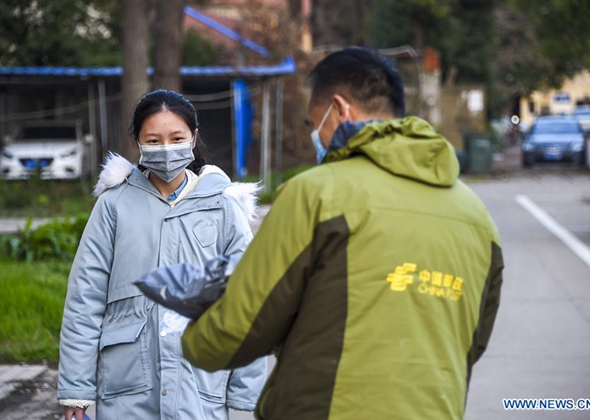Homepage > SERVICE > Xi Focus: PROTECT: Can-do China Curbs COVID-19
Xi Focus: PROTECT: Can-do China Curbs COVID-19
Time: 2020/12/16 11:15
Author: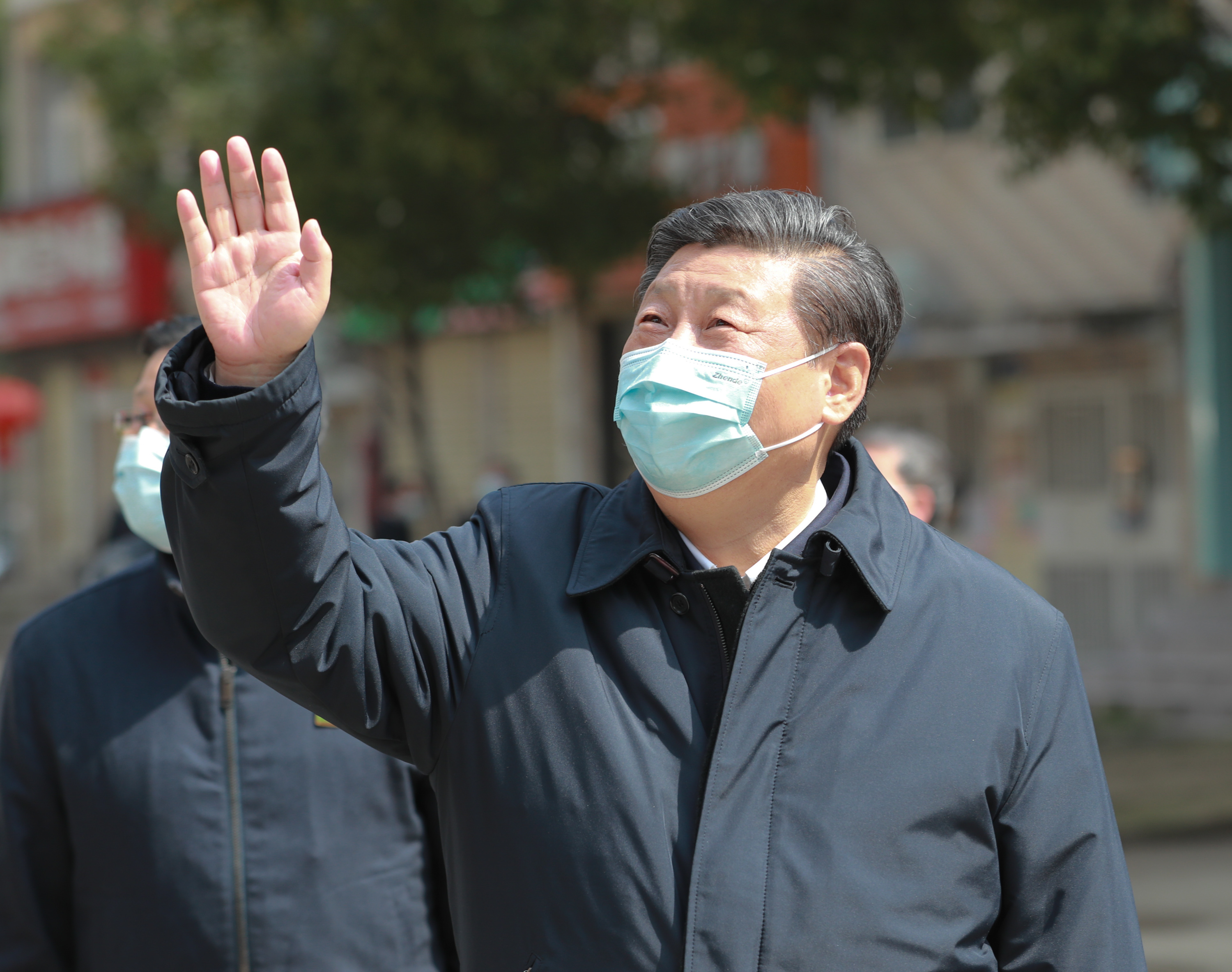
Chinese President Xi Jinping waves to residents who are quarantined at home and sends regards to them at a community in Wuhan, central China's Hubei Province, March 10, 2020. [Xinhua/Pang Xinglei]
A review of the practice and experience of China and its people encapsulated in the acronym "PROTECT"
BEIJING, March 11 (Xinhua) — As the novel coronavirus disease (COVID-19) has taken a foothold in over 100 countries and regions, the threat of a pandemic has become very real. Still, it would be a pandemic that could be controlled.
Questions revolving around the COVID-19 spread have been mostly about "when, where, and how." How to contain an uneven epidemic at the global level requires different countries tailoring their responses to their scenarios.
As China pledges a continuous fight toward victory with prevention and control efforts having "turned the tide," the effectiveness of its playbook is getting more and more worldwide attention.
Here is a review of the practice and experience of the country and its people encapsulated in the acronym "PROTECT" — Party leadership, "renmin" for the people, openness and transparency, technology and science, early treatment, cooperation with the international community, and targeted and agile approach.
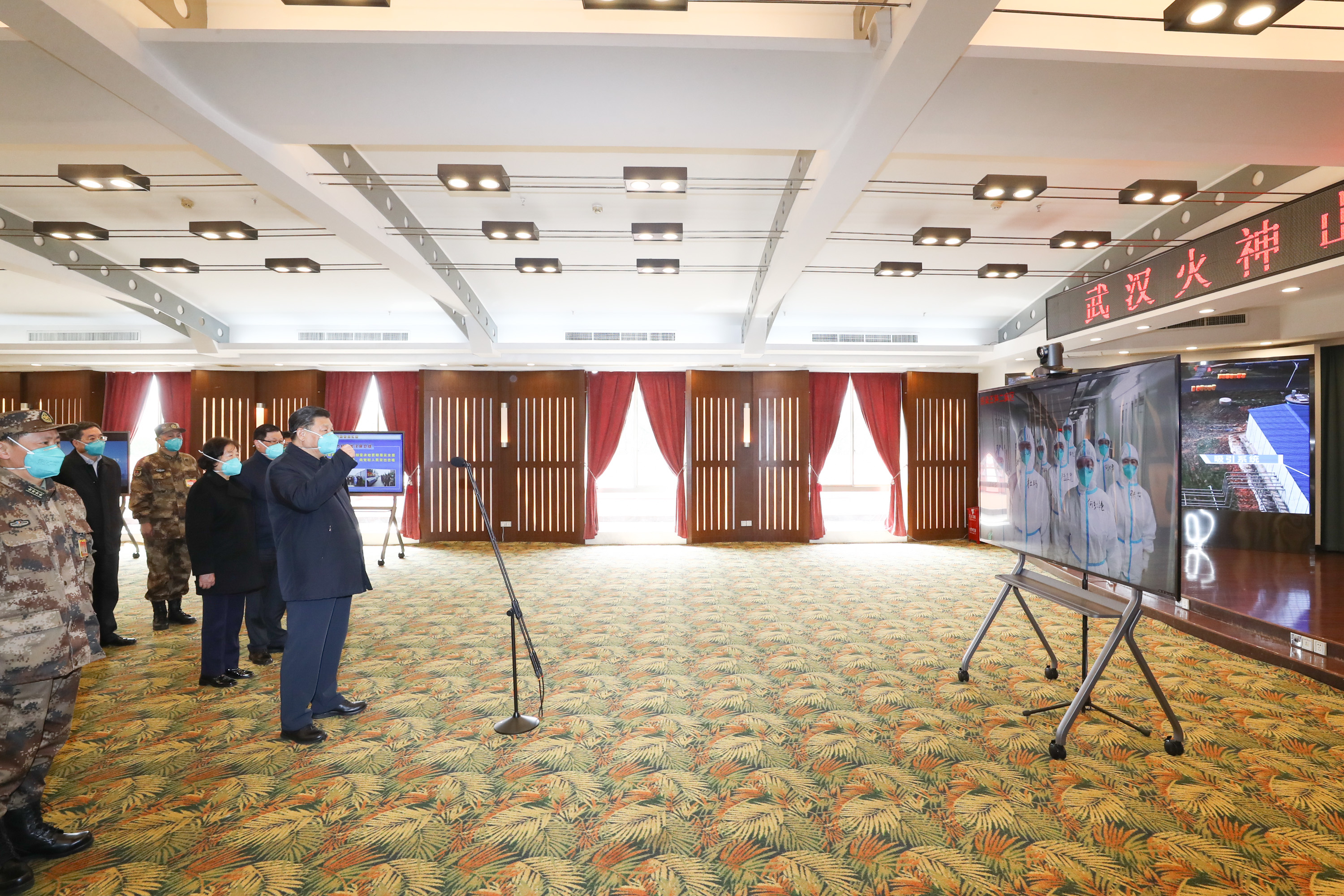
Chinese President Xi Jinping sends regards to medical workers who have been fighting the epidemic on the front line day and night, by video calls at the Huoshenshan Hospital in Wuhan, March 10, 2020. [Xinhua/Ju Peng]
Party Leadership
For China, the COVID-19 outbreak is a major public health emergency considered to have spread fastest, caused the most extensive infection and has been the hardest to contain over the past 70 years. Defeating an invisible enemy of such ferocity would be impossible without the strong leadership of the Communist Party of China (CPC).
As chief of the World Health Organization (WHO) Tedros Adhanom Ghebreyesus noted, political commitment is needed in every country and an all-of-government and all-of-society approach should be adopted.
Under the unified and centralized leadership of the CPC Central Committee, China formed a central leading group on the epidemic, dispatched a central guiding team and demanded a State Council inter-agency task force play its full role in coordination. The country mobilized the whole of government and stayed aggressive in stemming from the virus, with the Chinese people showing a deep commitment to collective action in the face of the common threat.
With President Xi Jinping as the commander-in-chief, Party committees and governments at all levels act in a coordinated national response and follow unified command, coordination and dispatch. They unite as one like a fortress, fully implement the joint prevention and control measures, put up entrenched defense lines and build a strong synergy against the virus.
The solidarity of provinces and cities in support of the most vulnerable populations and communities has been remarkable. Despite ongoing outbreaks in their areas, governors and mayors have continued to send thousands of medical workers and tonnes of vital personal protective equipment supplies into Hubei Province and its capital city Wuhan, the epidemic epicenter.
China's progress in containing the virus should be attributed to government leadership and the cooperation of its people at the same time, Tedros told Xinhua. "It cannot happen without the strong commitment from the government and strong cooperation by the people."
Since the outbreak, the CPC Central Committee has taken the most comprehensive, rigorous and thorough prevention and control measures to resolutely curb the spread of the virus in Wuhan and Hubei.
"All prevention and control measures taken by the CPC Central Committee against the virus are to prevent more people from being infected and save more patients' lives," said Xi, who is also general secretary of the CPC Central Committee and chairman of the Central Military Commission, on Tuesday during his inspection tour in Wuhan.

Chinese President Xi Jinping inquires about purchasing and supply of people's daily necessities at a community in Wuhan, March 10, 2020. [Xinhua/Xie Huanchi]
Renmin: the People
Praising the people of Wuhan, Xi said the positive trend in epidemic control could not have been achieved without their sacrifice, devotion, perseverance and efforts. He also sent condolences to people who died in the epidemic and people who sacrificed their lives fighting on the front line on behalf of the CPC Central Committee.
The war on the sudden outbreak of COVID-19 is a people's war in essence. The country has been closely relying on "renmin" — the people — to win the people's war against the epidemic.
The people in Wuhan actively minimized outdoor exposure, canceled public gatherings and accepted travel restrictions, which for them meant staying at home most of the time and suspending normal routines.
Even so, they went to extra lengths to help. The city saw private business owners supplying free coffee and goggles to hospital staff while their businesses stalled, couriers offering to drive medical workers to and from hospitals and grocery store tallymen packing and delivering staples for each household to put food on the table for the city's 10 million residents.
About 20,000 volunteers have been serving as deliverymen, drivers, coordinators and community workers in grocery stores, neighborhoods and hospitals in Wuhan, with an additional 24,000 recruited since late February to meet the delivery needs of neighborhoods in the city, official data showed.
"China's success rests largely with a strong administrative system that it can mobilize in times of threat, combined with the ready agreement of the Chinese people to obey stringent public health procedures," said a recent editorial by Lancet, a prestigious medical journal.
With their concrete actions, Wuhan people have demonstrated the strength and spirit of China, as well as the Chinese people's love for family and the nation, which enables them to stick together through thick and thin, Xi said.
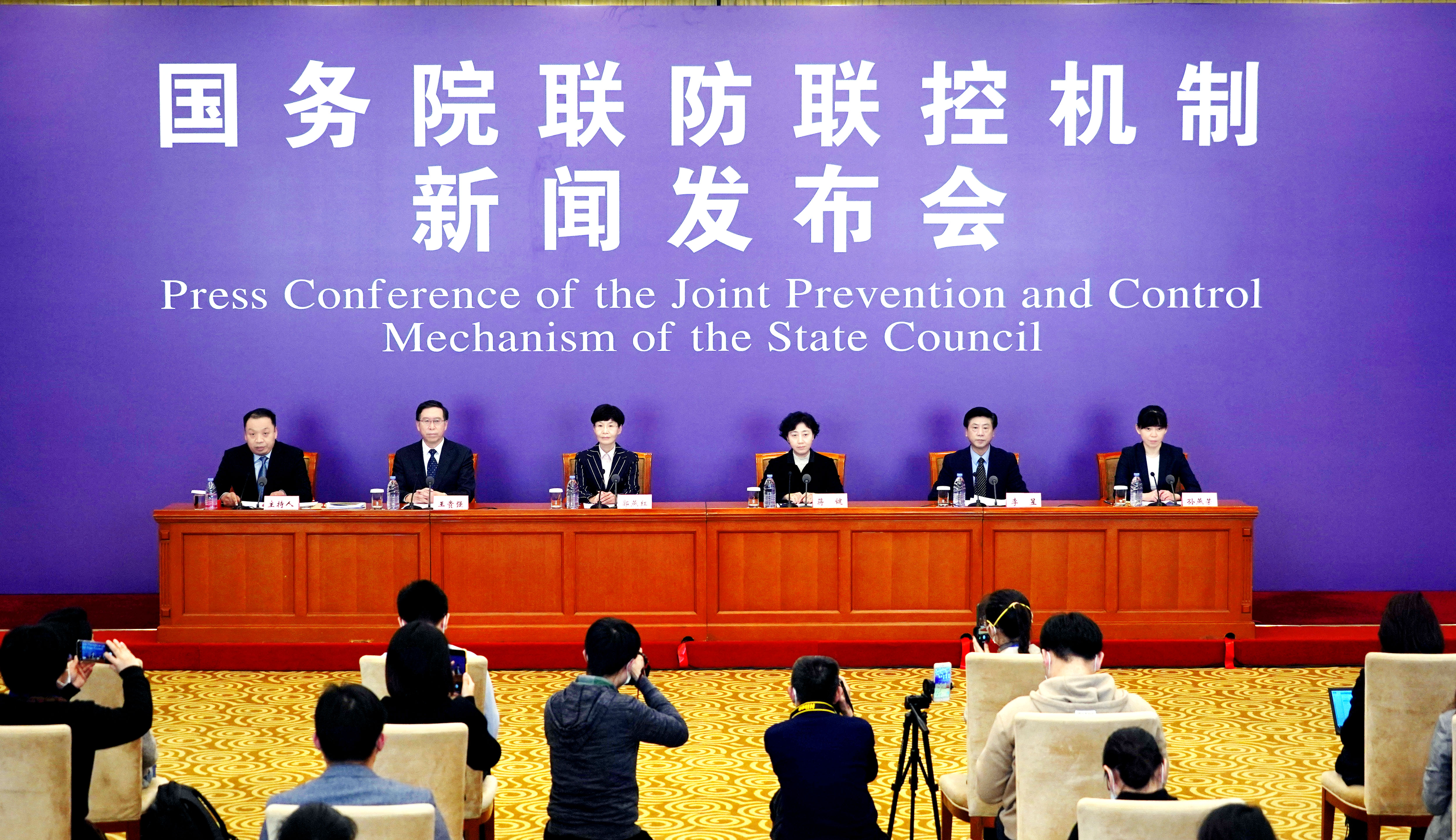
Photo taken on February 17, 2020 shows a press conference on the prevention and control of the novel coronavirus outbreak held by the joint prevention and control mechanism of the State Council in Beijing. [Xinhua/Pan Xu]
Openness and Transparency
When it comes to stemming an epidemic, honesty is the best policy. Xi has stressed frequent release of authoritative information by relevant agencies at different levels, addressing existing problems squarely and responding to public concerns in a timely and specialist manner with a clear aim.
Since January, the State Council Information Office and the National Health Commission have regularly held live press conferences regarding the joint efforts in virus prevention and control. The inter-agency task force under the joint prevention and control mechanism of the State Council held press conferences daily. At the same time, many provincial-level regions including Hubei also hold press conferences every day.
On February 25, the State Council Information Office moved the pressroom to Wuhan, so as to facilitate the release of timely, comprehensive and accurate information regarding the forefront of the epidemic battle. Besides, press conferences also frequently gave the floor to frontline personnel including medics, police officers and volunteers, whose stories of devotion to duty touched so many hearts.
By releasing the latest information about the epidemic, prevention and control measures and effects, these press conferences have taken the initiative in responding to public concerns and quashing rumors and thus have further improved the effectiveness of information disclosure.
As a responsible major country, China has also from the start acted openly and transparently in releasing relevant information to the world and seeking international cooperation to prevent the spread of the epidemic worldwide.
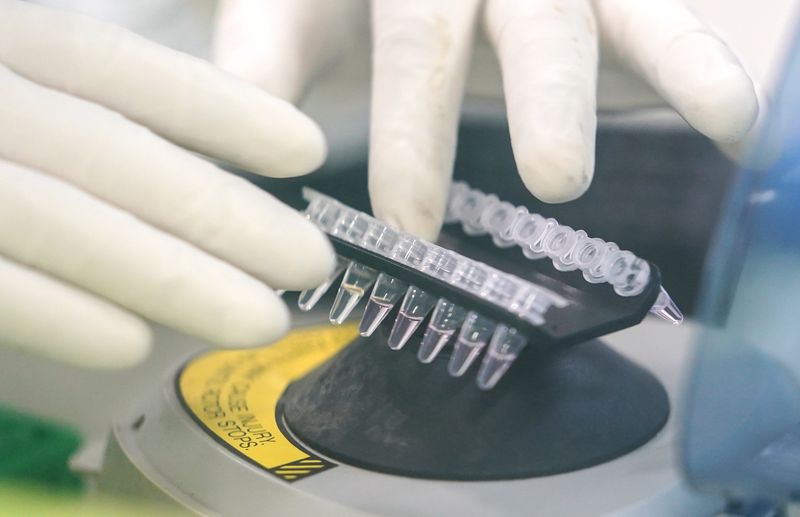
A staff member conducts nucleic acid tests at a laboratory in Wuhan, central China's Hubei Province, February 13, 2020. [Xinhua/Cheng Min]
Technology and Science
Xi has said science and technology are humanity's most powerful weapon against diseases. China has built a powerful arsenal by giving full play to indigenous solutions.
It has capitalized on the use of technology, big data and AI for COVID-19 preparedness, readiness and response. Authoritative and reliable information, medical guidance, access to online services, provision of educational tools and remote work tools have been developed in and used across China. These services have increased accessibility to health services, reduced misinformation and minimized the impact of fake news.
For example, it has launched a new batch of programs to develop testing products for COVID-19, including more sensitive and rapid detection kits for nucleic acid and antigen and antibody testing.
It promoted treatment with traditional Chinese medicine (TCM). TCM has been involved in treating 92.5 percent of confirmed COVID-19 cases nationwide, as studies confirmed that TCM and Western medicine work better when combined than used independently in improving the recovery rate and reducing the mortality rate.
It also promptly enlisted new information technologies. Telecom enterprises use big data to analyze the people flows, and the epidemic situation in key areas during important periods, map close contacts and ensure timely supply and distribution of key medical materials.
The AI technology is applied to support COVID-19 diagnosis and treatment, no-contact delivery and drug selection as well as vaccine development, while 5G-empowered robots have been providing medical services such as remote care, body temperature tests, spraying disinfectants, cleaning and drug delivery.
Chinese researchers have also developed an AI-assisted computed tomography analysis system, offering a more accurate distinction of a patient with COVID-19 or common viral pneumonia amid the intensive clinical demands in the anti-epidemic fight.
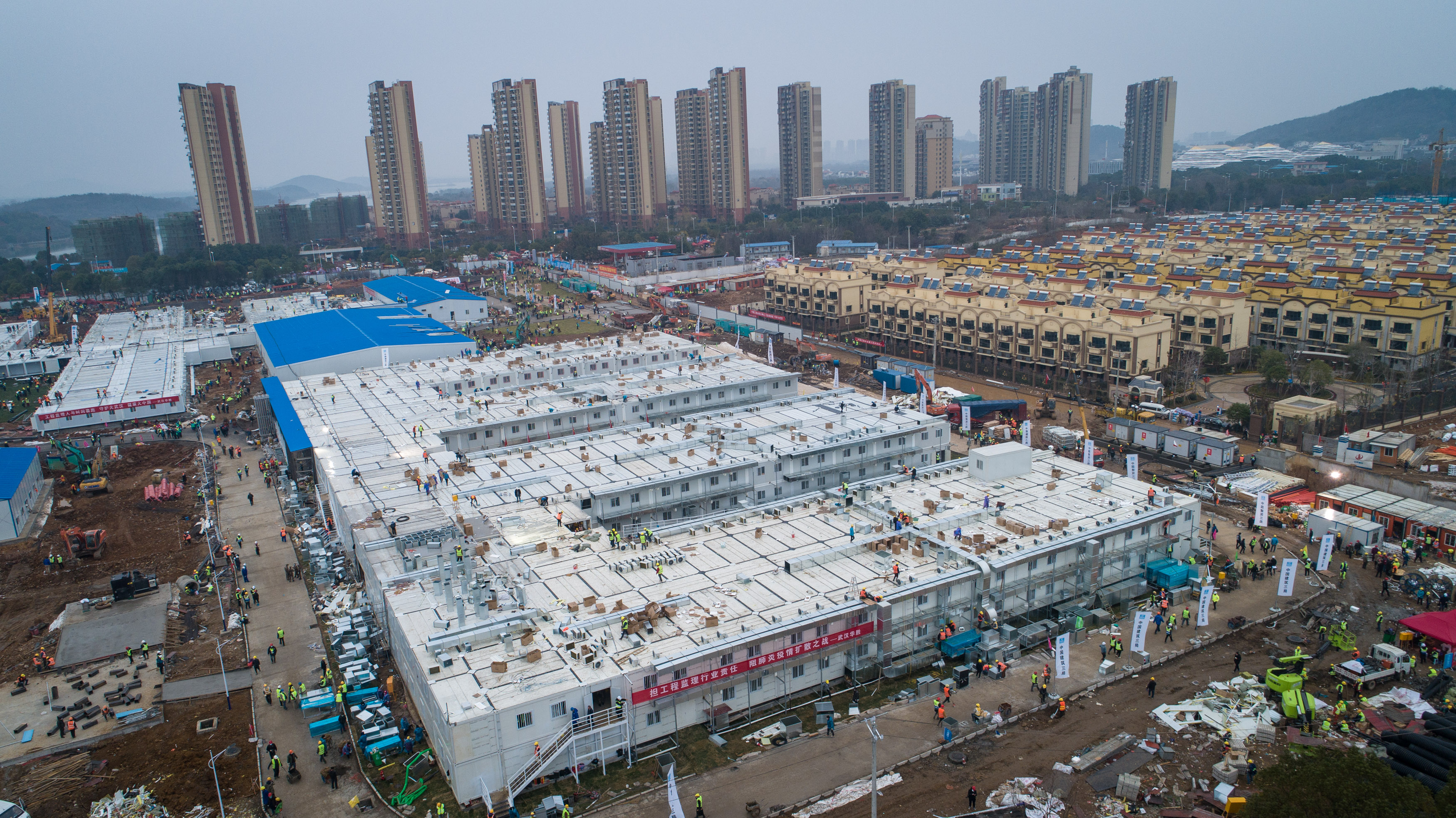
Aerial photo taken on February 2, 2020 shows the Huoshenshan (Fire God Mountain) Hospital in Wuhan, central China's Hubei Province. [Xinhua/Cheng Min]
Early Treatment
Speed is everything. China's progress in curbing the epidemic has proved the approach of early detection, reporting, isolation and treatment the most primitive yet the most effective.
Xi has reiterated the importance of the approach. He urged more efforts to resolutely curb the spread of the epidemic, hospitalize all confirmed patients, conduct thorough tests of all suspected patients and isolate all those close contacts. He demanded to track and manage every potential risk without leaving any dead corners.
To leave no COVID-19 patient unattended and snap the spread of the illness, Wuhan built two hospitals, Huoshenshan and Leishenshan, in two weeks, as well as 16 temporary hospitals converted from sports stadiums and exhibition halls. The 16 temporary hospitals have been closed by Tuesday as patients were discharged.
The country also saw factories built in six days to replenish the supply of face masks, while auto and apparel makers adapted their production lines for medical supplies.
Chinese scientists and public health experts have been refining their response in tandem with the latest clinical discoveries at what a China-WHO joint mission team on COVID-19 called a "remarkable speed," which provided the vital evidence base for China's strategy, gaining precious time for the response.
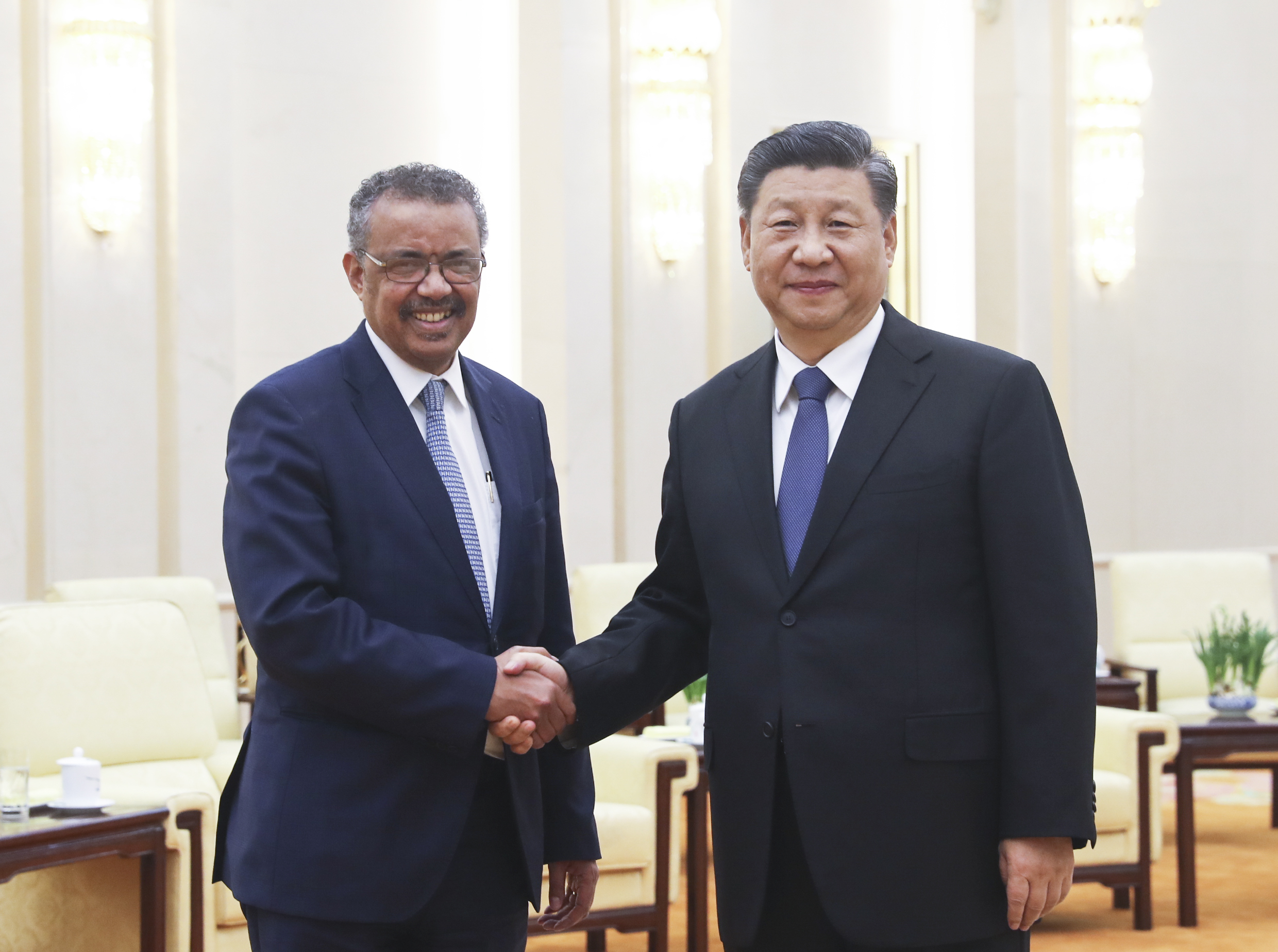
Chinese President Xi Jinping meets with visiting World Health Organization (WHO) Director-General Tedros Adhanom Ghebreyesus at the Great Hall of the People in Beijing, January 28, 2020. [Xinhua/Ju Peng]
Cooperation with Int'l Community
Xi noted that public health security is a common challenge to human beings as a whole, and all countries need to join hands to deal with it.
Amid its no-holds-barred domestic battle against the virus, China has actively and voluntarily cooperated with and shared information with the international community, buying time for a global response to the virus and offering help when needed.
Tedros commended China's quick moves in identifying and sequencing the novel coronavirus pathogen and sharing the sequence with the rest of the world, which has enabled the world to prepare for testing, diagnostics and other actions.
China has donated testing kits, masks, hazmat suits, thermometers and other supplies to countries including Iran, Iraq, Japan and the Republic of Korea, while doctors in Wuhan shared treatment experiences with their Italian counterparts in a teleconference.
To help fortify public health systems in developing countries, China announced a donation of 20 million U.S. dollars to the WHO in support of the global fight against COVID-19.
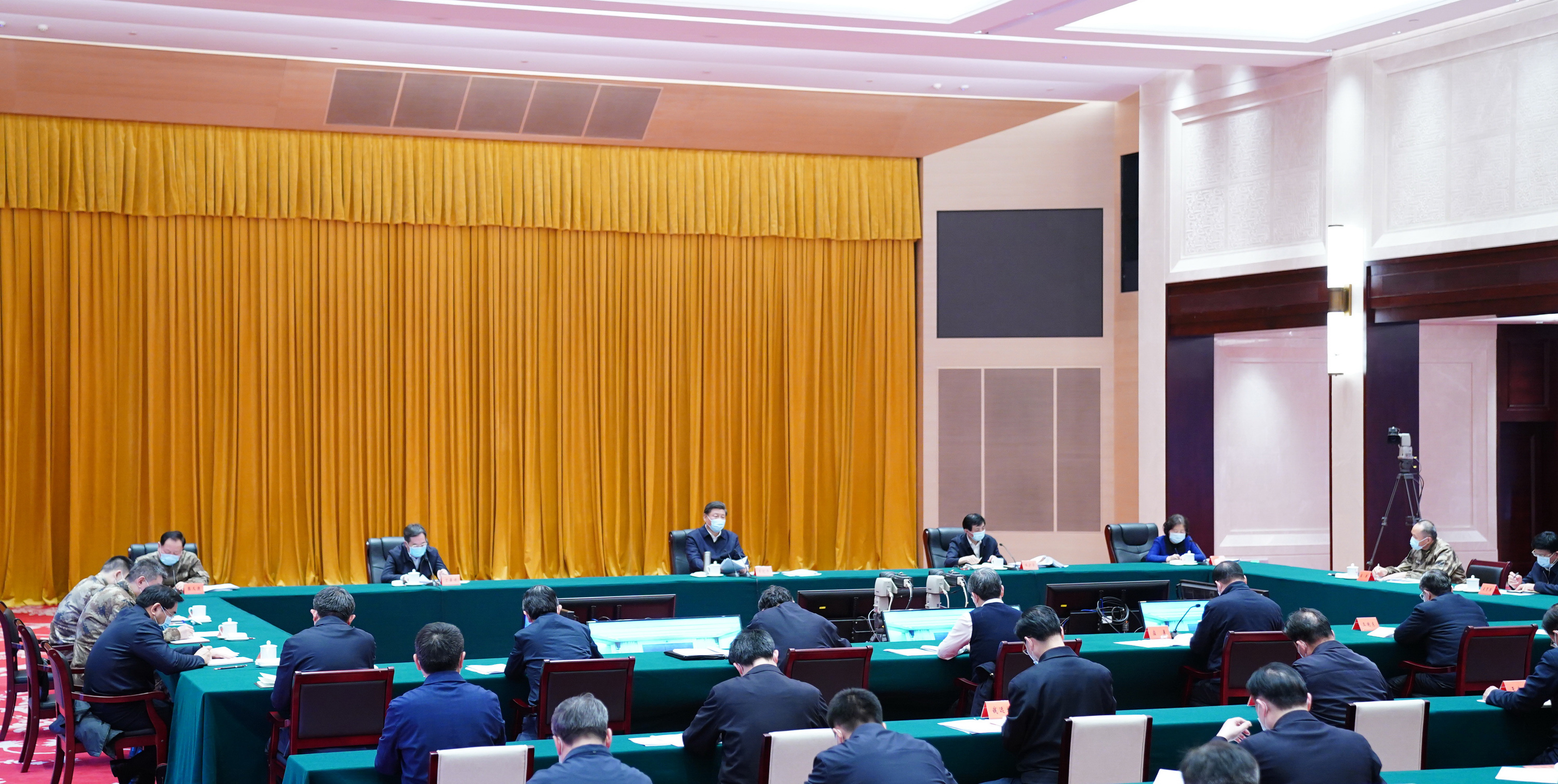
Chinese President Xi Jinping chairs a teleconference and delivers an important speech after the field inspection of the epidemic prevention and control work in Wuhan, March 10, 2020. [Xinhua/Xie Huanchi]
Targeted, Agile Approach
"When Wuhan wins, Hubei wins. When Hubei wins, China wins." In a pep talk to frontline medical staff in the epicenter of the outbreak in early February, Xi had clarified how the country would break the chains of transmission and resolutely win the people's war against the epidemic.
The priority given to Wuhan and Hubei reflects a fundamental strategy — the country prioritized coordinated national response as well as local flexibility. Differentiated policies have been adopted for epidemic control and restoration of economic and social order in different places.
"In the face of a previously unknown virus, China has rolled out perhaps the most ambitious, agile and aggressive disease containment effort in history," according to a report by the China-WHO joint mission team which investigated COVID-19 in China last month.
The strategy that underpinned this containment effort was initially a national approach that promoted universal temperature monitoring, masking and hand washing. However, as the outbreak evolved and knowledge was gained, a science and risk-based approach was taken to tailor implementation. Specific containment measures were adjusted to the provincial, county and even community context, the capacity of the setting and the nature of novel coronavirus transmission there, the report said.
Hubei Province and the city of Wuhan are required to take more stringent, more targeted and more effective measures to curb the spread of the epidemic within their jurisdictions and beyond, and ensure the supply of all kinds of materials and necessities for the local people.
Local authorities also adopt the region-specific approach in terms of restoring the normal order of life and businesses, expanding business operations in light of local health risks.
In this two-front war — combating the outbreak and bolstering economic and social development -- China tries to outmaneuver the difficulties with measures tailored to the local context. The recovery of China's economy has gained momentum thanks to the approach.
(Source: Xinhua)
- Study Materials Packed, Deliv (Dec 16)
- Changchun Library Reopens wit (Dec 16)
- China to Improve Medical Wast (Dec 16)
- Xi's Wuhan Trip Boosts Confid (Dec 16)
| Media partners: |
| US 103 radio broadcast Ra | U.S. regulation news | |

